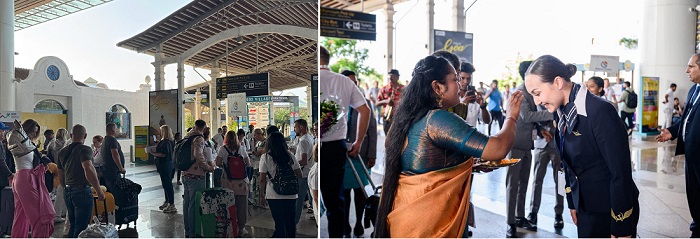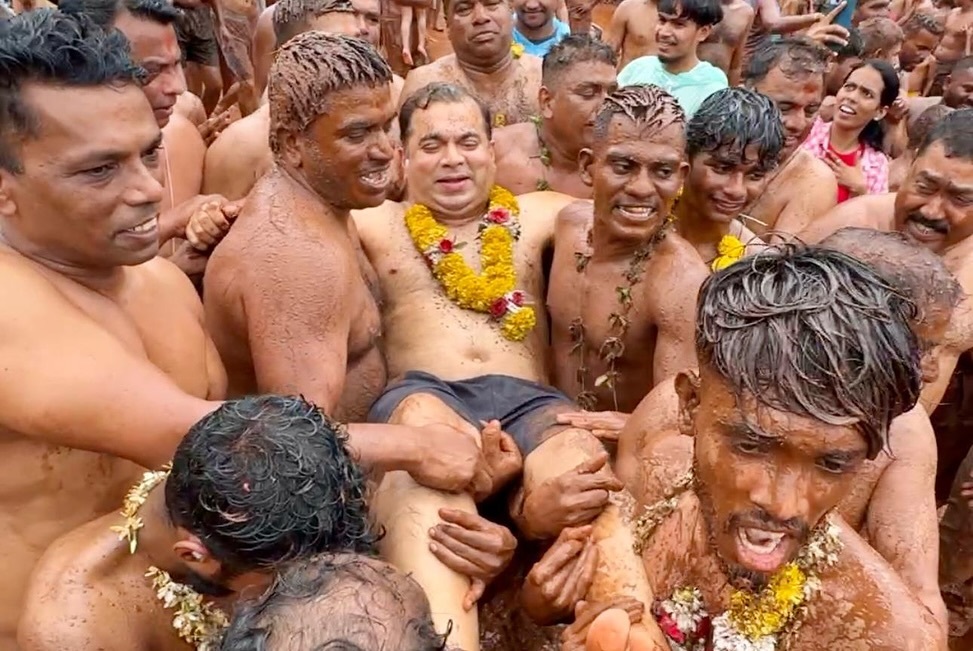Goa’s tourism landscape is poised for a significant upgrade, with ₹350 crore in development projects currently underway. Tourism Minister Mr. Rohan A. Khaunte unveiled this ambitious vision today July 30, 2025, in the Goa State Legislative Assembly, outlining a comprehensive strategy to bolster infrastructure, expand global connectivity, and diversify the state’s appeal beyond its renowned beaches.
Minister Khaunte emphasized that the government is adopting a long-term, strategic approach to tourism, acknowledging that while major results will take time, positive shifts are already evident. He presented compelling statistics: from January to June 2025, Goa welcomed 5.45 million tourists, comprising 5.18 million domestic and 0.27 million international visitors, marking an 8.4% year-on-year growth. June alone saw 834,000 arrivals, buoyed by cultural events like the São João celebrations, forest retreats, and creek excursions. Hotel occupancy remained robust throughout the first half of the year, ranging from 70% to a full 100%, signaling sustained high demand.
Dismissing claims of a tourism downturn, Khaunte presented official figures demonstrating that Goa has surpassed its pre-COVID-19 visitor numbers. In 2024, the state welcomed 10.4 million tourists, a significant increase from 8.06 million in 2019. This includes nearly 9.94 million domestic tourists and over 467,000 international visitors, reflecting a remarkable 39.5% rise in domestic and 50% growth in international tourism compared to pre-pandemic levels.
Enhanced Connectivity and Global Outreach


, According to Minister Khaunte, connectivity is the pivotal factor driving this growth. He confirmed the resumption of direct flights between Goa and Gatwick (UK) by late September. Starting October 5, Aeroflot will introduce three weekly flights from Yekaterinburg, Russia, to Goa’s Mopa Airport, each carrying 210 passengers, projected to bring over 13,000 Russian tourists this season. New air links with nations like Poland, Kazakhstan, and Uzbekistan are further contributing to the rise in international arrivals. Goa is also actively engaging in global roadshows and tourism promotions, including the Prime Minister’s ‘Chalo India’ campaign.
Beyond the Beaches: Regenerative and Spiritual Tourism


Goa stands out as the first Indian state to embrace regenerative tourism under its “Goa Beyond Beaches” initiative. This approach centers on three core pillars: People, Economy, and Environment, prioritizing quality tourism experiences over sheer visitor volume. Spiritual tourism forms a key component of this expanded vision, with the launch of the Ekadasha Teertha initiative. This spiritual circuit connects 11 historic temples across three thematic routes. GTDC buses are already operational on these routes, and tenders have been floated to develop nine common tourist facilities at these sacred sites.
In terms of broader tourism infrastructure, Goa is leveraging Central Government schemes like Swadesh Darshan and PRASHAD. Two significant projects are underway: the Unity Mall in Chimbel, with ₹161 crore sanctioned, and the Chhatrapati Shivaji Maharaj Digital Museum in Ponda, allocated ₹125 crore (₹98 crore from the Centre). These additions are set to significantly enhance the state’s cultural offerings. Work on the Unity Mall has already commenced, with final design drawings anticipated by July 31.
Extending Festivities and Enhancing Safety
Minister Khaunte also announced that World Tourism Day celebrations in September will expand into a month-long festival, transforming the monsoon season into an engaging and inclusive tourism period under the banner of World Tourism Month. Traditional festivals such as São João, Sangodd, Shigmo, Chikhal Kalo, Carnival, and Deepotsav are being revitalized and promoted with government support. The 2025 São João festival in Siolim, for instance, attracted around 10,000 attendees and generated 4.4 million online impressions, while the third edition of Chikhal Kalo in Marcel drew over 9,000 visitors.


To ensure a superior tourist experience and bolster safety, the state has rolled out initiatives like the 1364 tourist helpline and the Beach Vigil App, alongside the deployment of trained lifeguards and coastal police. A dedicated agency has been appointed for beach cleaning. Enforcement measures have also been strengthened, with 318 touts booked between January and July 2025, and the Chief Minister has called for stringent action in vulnerable areas like beaches and casino zones. The government is also proactively addressing stray dog issues in tourist zones through coordination with local Panchayats and the Animal Husbandry Department.
The government is also focusing on shack operators, recognizing their vital role as ambassadors for Goan tourism, exploring regulatory and supportive measures for them. High hotel and restaurant occupancy across the state points to a successful shift towards attracting higher-spending, quality tourists. Minister Khaunte noted that comprehensive hotel occupancy data is being collected via the Tourism Information Management Enterprise (TIME) system, which currently covers 25% of registered units and is slated for full implementation.
In summary, Minister Khaunte reiterated that Goa’s tourism now extends far beyond its iconic beaches, encompassing rich culture, heritage, spirituality, wellness, and nature-based experiences. “Tourism in Goa is moving in the right direction,” he affirmed, highlighting the collaborative efforts of the “Double Engine Sarkar” – the state and central governments – in delivering this ₹350 crore transformative vision for the state’s tourism sector.
Also Read
International Tourists Flock to Prayagraj for Mahakumbh 2025
Watch on Youtube
KARNATAKA INTERNATIONAL TRAVEL EXPO (KITE 2025) Inaugural Function
